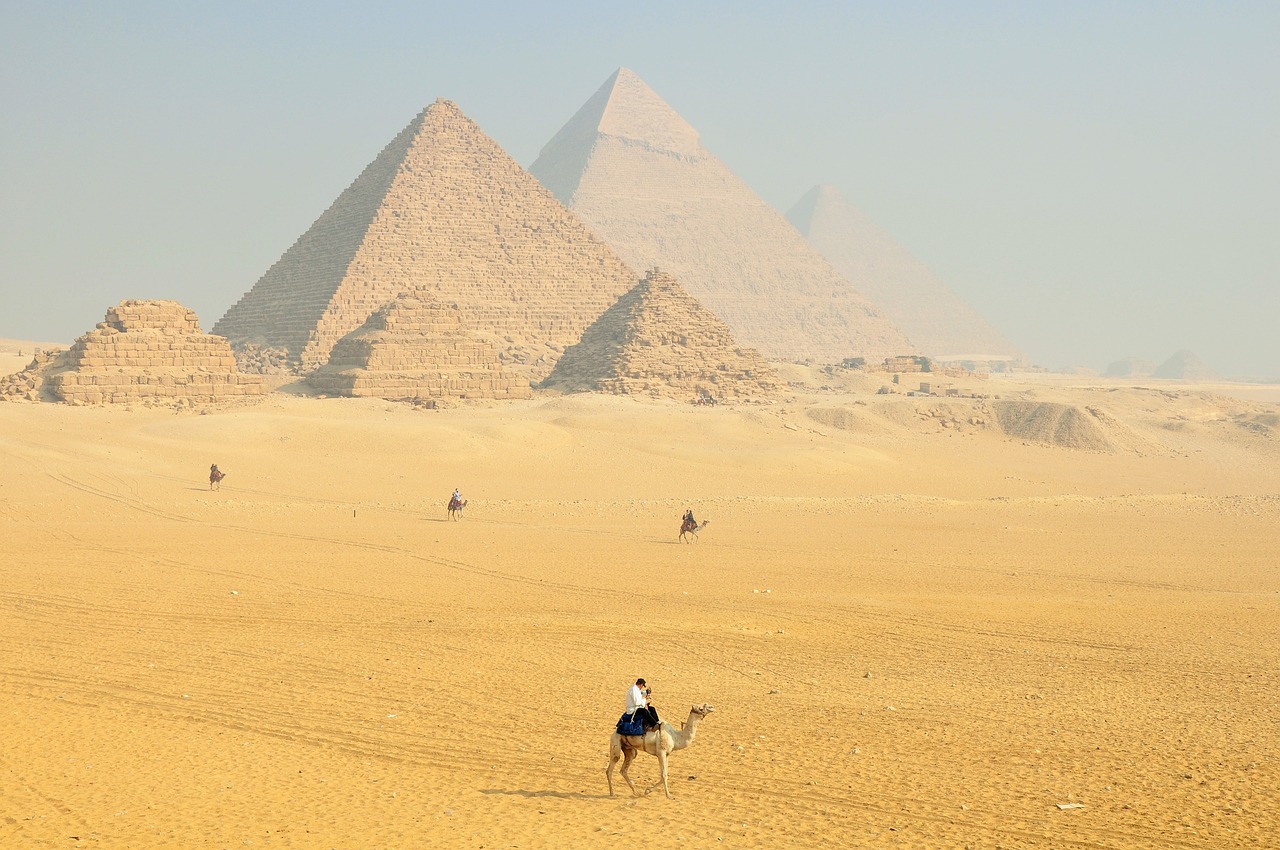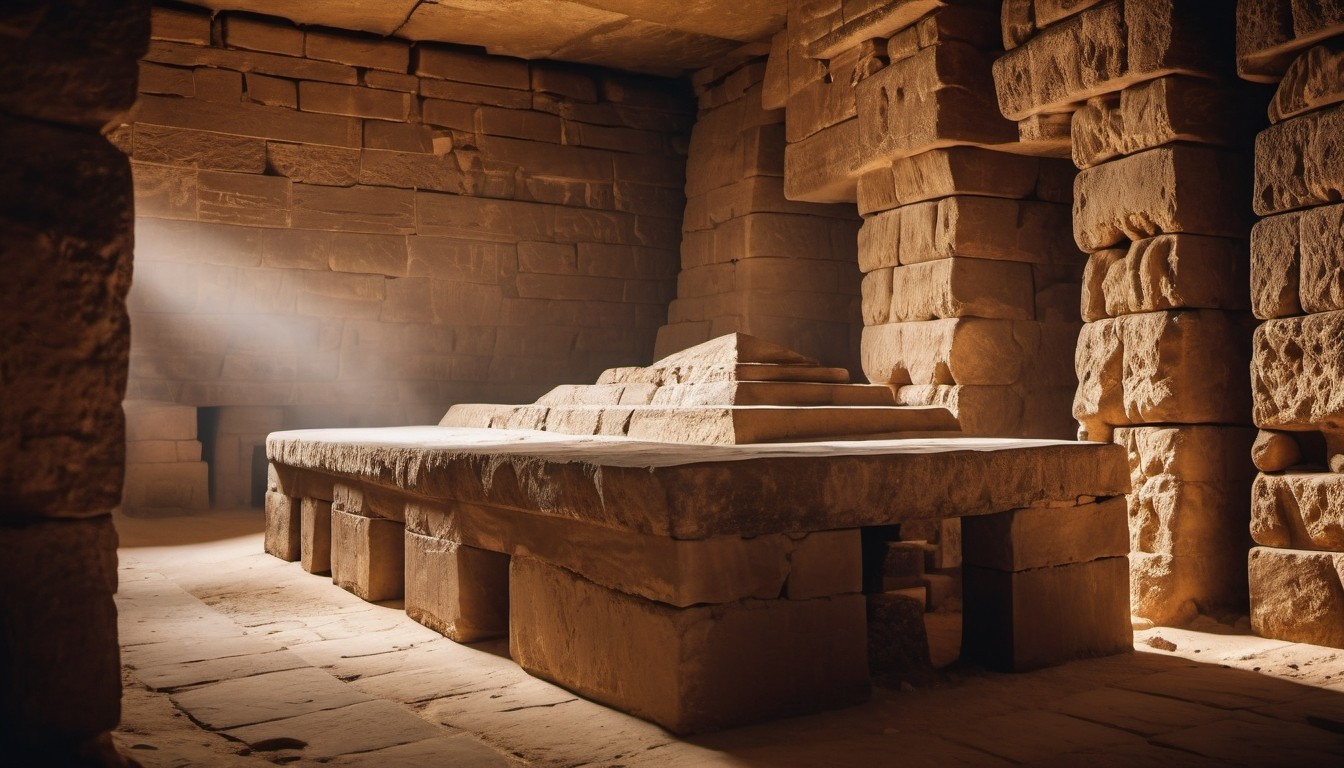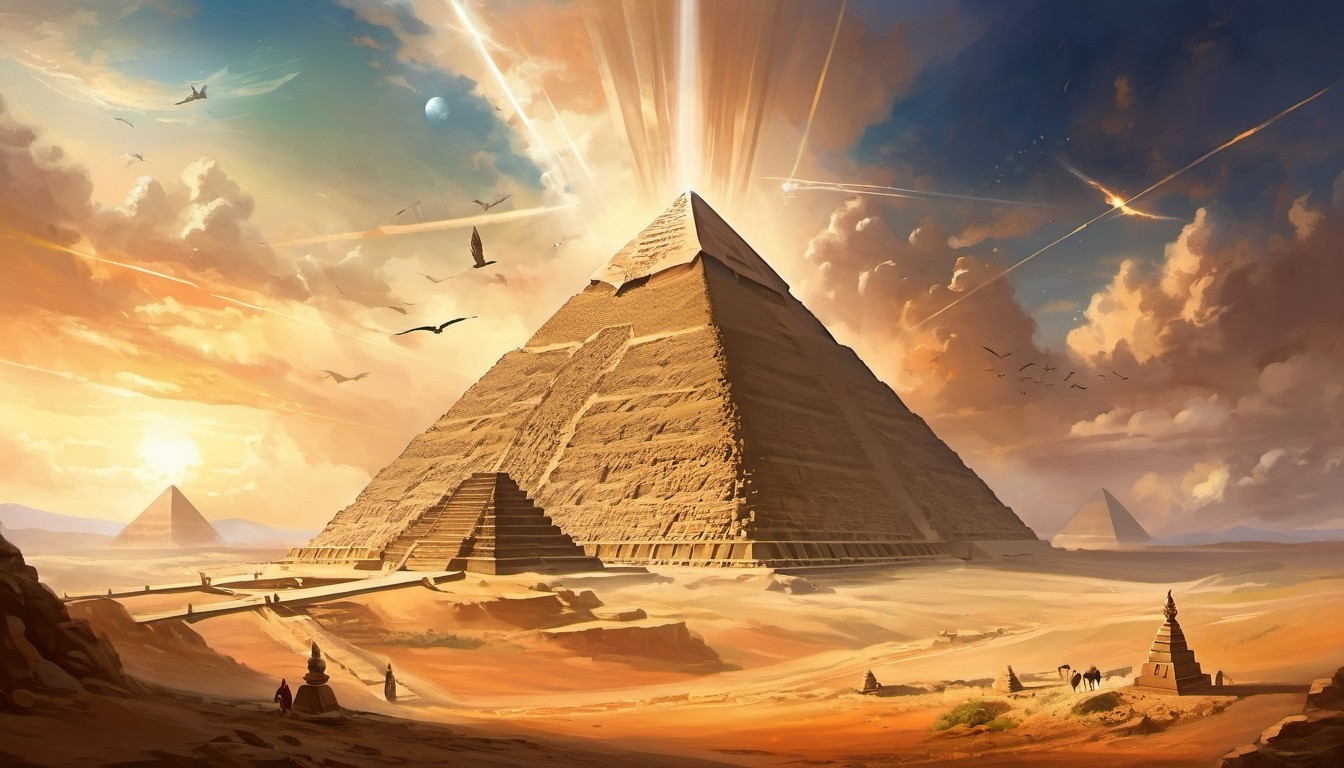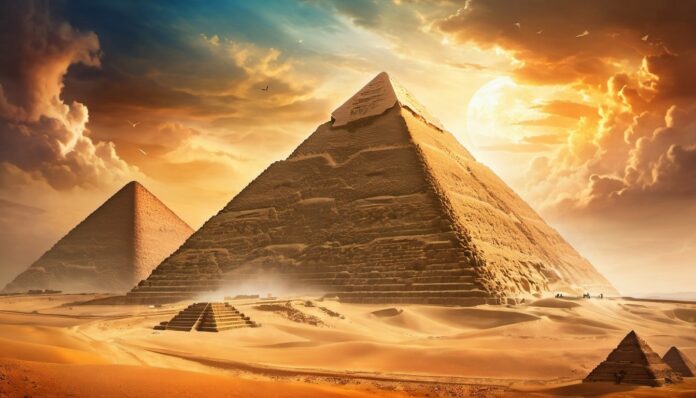Every educated person should know some interesting facts about the Egyptian pyramids. Here, we will briefly tell you about the mysteries and secrets of this extraordinary phenomenon.
To remind you: who built these majestic structures and for what purpose is still unknown. The explanation that the pyramids supposedly served as tombs for the pharaohs is merely a hypothesis.
As of November 2008, a total of 118 pyramids have been discovered in Egypt. The most important ones are the three great pyramids located near Cairo. They are named after the pharaohs: Khufu (Cheops), Khafre (Khafra), and Menkaure (Mykerinos).
In 1983, Englishman Robert Bauval first claimed that the layout of the necropolis on the Giza plateau precisely matches the pattern of the Orion constellation.
Interesting Facts About the Three Great Egyptian Pyramids
- The shape of these structures is not stepped, like the nearby buildings, but strictly geometric and pyramidal. The pyramid walls have an angle of inclination from 51° to 53°.
- All the sides are precisely oriented to the four cardinal points.
- The heights of the pyramids range from 66 to 143 meters. For comparison, this is like stacking five nine-story buildings on top of each other.
- On average, the blocks of the pyramids weigh 2.5 tons, but some exceed 80 tons.
- It is believed that the construction took only a few decades, not centuries.
- The Great Pyramid of Khufu consists of 2.5 million blocks.
- No cement or any other binding substance was used in the construction of the pyramids. The huge stones are just incredibly well laid.
- Many blocks have an angle of inclination relative to the base. They form such a perfect plane that it seems like a piece of butter cut by a hot knife. (Could this really have been done with primitive tools, as historians convince us?)
- The exterior surface of the pyramids was clad with plates (mainly limestone), forming wonderful, smooth sides. Currently, this coating is preserved only on some of the pyramid tops.
Innovative Construction Techniques
The construction techniques used to build the pyramids continue to baffle scientists and engineers today. Recent studies suggest that the ancient Egyptians might have used advanced knowledge of geometry and physics.
Some theories propose that they had a sophisticated understanding of tools and levers to move and position the massive stones with incredible precision.
Hidden Chambers and New Discoveries
In 2017, researchers using advanced scanning technology discovered hidden chambers within the Great Pyramid of Khufu. These chambers have sparked renewed interest and speculation about their purpose.
Some believe these voids could contain undiscovered treasures or additional burial sites, while others think they might hold more secrets about the construction techniques used by the ancient builders.
Legends and Myths About the Egyptian Pyramids
The Curse of the Pharaohs
One of the most famous legends associated with the Egyptian pyramids is the Curse of the Pharaohs. According to this myth, anyone who disturbs the tomb of an ancient Egyptian pharaoh will be cursed with bad luck, illness, or even death.
The legend gained popularity in the early 20th century when several members of the team that discovered Tutankhamun’s tomb died under mysterious circumstances. While scientists attribute these deaths to natural causes and the hazardous conditions inside the tombs, the idea of a pharaoh’s curse remains a powerful and captivating story.
Extraterrestrial Builders
Another popular myth is that the pyramids were built with the help of extraterrestrial beings. Proponents of this theory argue that the architectural precision and sheer scale of the pyramids could not have been achieved with the tools and knowledge available to the ancient Egyptians.
They suggest that advanced aliens might have shared their technology or even directly assisted in the construction. While this theory lacks scientific evidence, it continues to capture the imagination of many people fascinated by the possibility of ancient alien contact.
The Lost Civilization of Atlantis
A fascinating myth links the pyramids to the legendary lost civilization of Atlantis. Some theorists suggest that the ancient Egyptians were descendants of Atlanteans who fled their sinking homeland and brought their advanced knowledge to Egypt.
According to this legend, the pyramids and other monumental structures are remnants of Atlantean technology and wisdom. While mainstream archaeology does not support this theory, it adds an intriguing layer to the mysteries surrounding the pyramids.
The Pyramids as Energy Sources
Another intriguing myth is that the pyramids were not just tombs but also served as powerful energy generators. Some alternative researchers propose that the pyramids’ shape and construction allowed them to harness and amplify natural energy from the Earth and cosmos.
This energy, they claim, could have been used for various purposes, from healing to technological advancements. While this theory is speculative and lacks empirical support, it reflects the enduring fascination with the pyramids’ potential functions beyond burial sites.
The Labyrinth Beneath the Pyramids
Ancient texts and local folklore speak of an extensive labyrinth beneath the Giza plateau, containing secret passageways, chambers, and possibly even a hidden library of ancient knowledge. This labyrinth, according to legend, was built to protect sacred texts and treasures from invaders and tomb robbers.
Though no definitive evidence of such a labyrinth has been found, the idea of a vast underground network continues to inspire archaeologists and adventurers alike.
The Alignment with the Stars
One of the most captivating legends is the idea that the pyramids were built to align with celestial bodies, specifically the stars in the Orion constellation. This theory suggests that the pyramids served as a cosmic map or were part of a grand design reflecting the heavens on Earth. While some researchers have found correlations between the pyramids’ alignment and certain stars, the full significance of this alignment remains a subject of debate and fascination.
These legends and myths contribute to the enduring allure of the Egyptian pyramids, blending historical fact with imaginative speculation and keeping the mysteries of these ancient monuments alive for future generations.
Pyramids Across the World
Interestingly, the concept of pyramid structures is not unique to Egypt. Similar structures have been found in various parts of the world, including Central America, Asia, and Europe. This global phenomenon raises intriguing questions about the exchange of architectural knowledge among ancient civilizations or the possibility of convergent evolution in architectural design.
The mysteries of the Egyptian pyramids continue to captivate the imagination of people around the world. As new technologies and methods of exploration develop, we may one day uncover more of the secrets held by these ancient wonders. Until then, the pyramids remain a testament to the ingenuity and sophistication of the ancient Egyptians.
